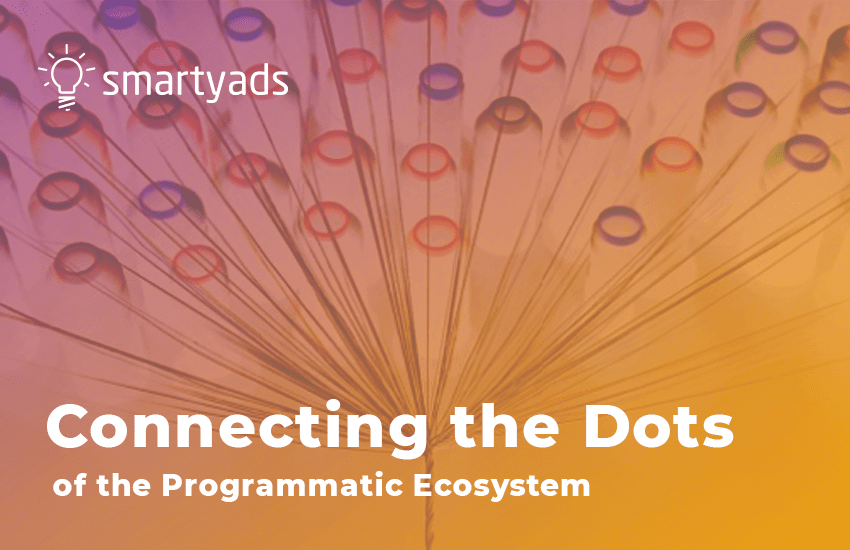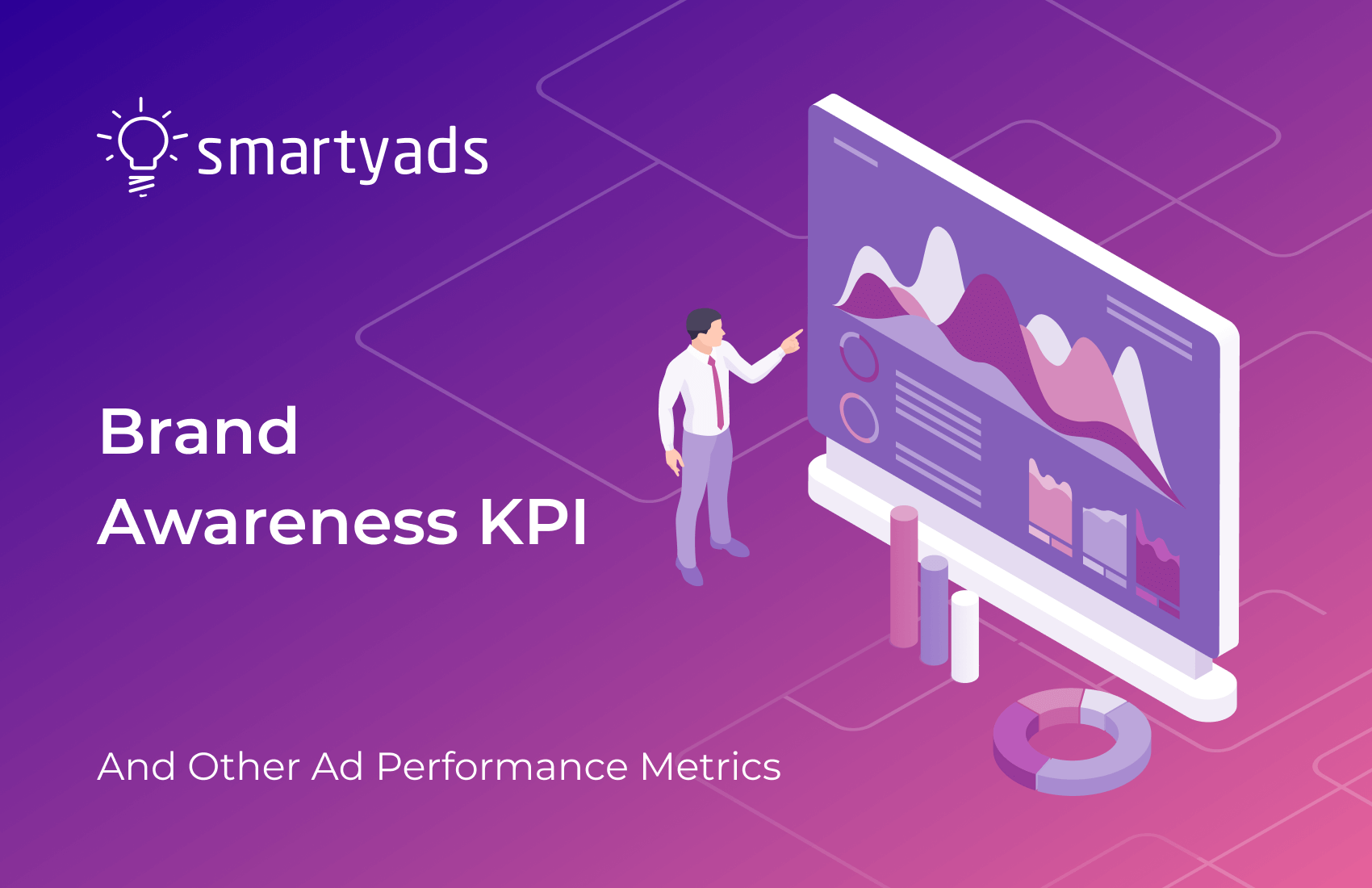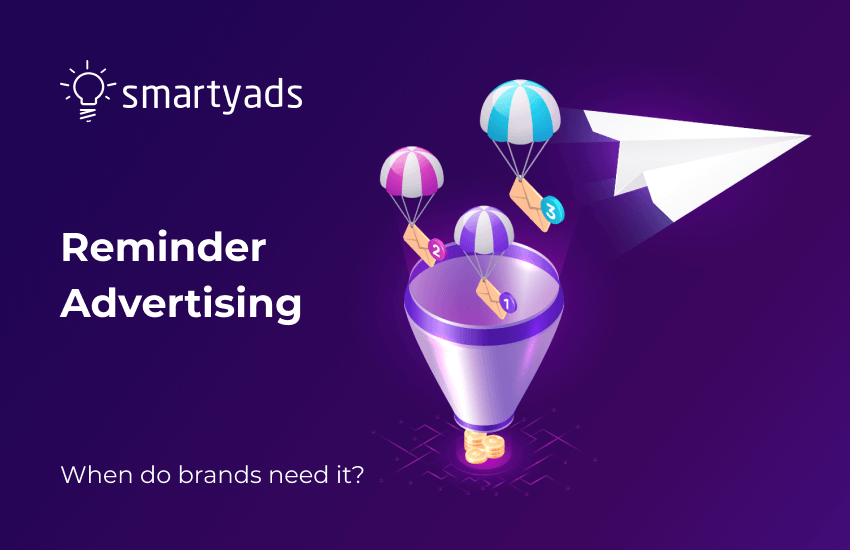Just like the exploration of the moon was a giant leap for mankind, programmatic advertising is a huge step for advertising. Only 50 years ago, marketers would stay awake all night thinking of a new slogan for a product, looking for the best place to showcase their ads and hoping that their message would grab the attention of as many people as possible.
Today, marketers buy audiences. Programmatic advertising made it possible to reach potential customers anywhere they go. Marketers can now deliver highly relevant messages to target audiences in the right context and at the right time. Programmatic is already a part of the business strategy for most publishers and advertisers. But digital advertising is not just supply-side platforms (SSPs) and demand-side platforms (DSPs).
Let’s take a deeper look at the programmatic ecosystem and its major players, how automated buying became a reality, and different programmatic media buying methods.

Ad Server
An ad server is a web-based technology that hosts ad creatives used in digital advertising, such as banner ads, static images, rich media, flash files, animated media and data about them. Using HTTP, ad servers deliver ad content to a range of publisher’s platforms, such as websites or mobile applications, in response to user requests. In addition to distributing ad creatives, ad servers are also responsible for targeting ads, tracking the number of impressions delivered and monitoring campaign performance. Some ad servers may also be integrated with malware-scanning companies that scan the content for signs of click fraud and ensure traffic safety. An ad server may be either remote (run by a third party) or local (run by a single publisher).
Ad Exchange
An ad exchange is a digital marketplace where publishers offer available ad space inventory to advertisers, agencies, ad networks and DSPs. Media buyers bid on impressions and purchase them via real-time bidding (RTB) auctions on the basis of one impression per every transaction. Publishers plug into an ad exchange through supply-side platforms, whereas buyers connect to an ad exchange using demand-side platforms. Ad exchanges help publishers maximize the value of advertising space in a competitive bidding environment and enable advertisers to deliver highly targeted messages to relevant audiences. Therefore, ad exchanges do not serve either side of the programmatic deal but rather act as a neutral platform where the supply meets the demand.
Learn more about SmartyAds Ad Exchange features for media buyers and for publishers.
Ad Network
An ad network is a company that buys ad impressions in bulk, then accumulates and classifies it into categories such as demographics (age, gender, marital status), location (city, area, country), language, interests and online behavior; segregates audiences according to the platform they use and device they’re on; or categorizes impressions by the content or other criteria. After inventory packaging, ad networks resell these labeled impressions to the agencies or independent advertisers for profit. Advertisers benefit from purchasing sorted impressions from ad networks because it saves time and ensures better targeting.
Agency Trading Desk
An agency trading desk (ATD) is a centralized organization that manages programmatic advertising campaigns. The ATD may be a separate department of a big holding company or may operate as a separate company serving advertisers and agencies. Agency trading desks measure campaign performance, research audiences, optimize marketing budgets, analyze data, create optimization strategies and coach clients on how to achieve desirable goals through RTB. ATDs manage ad campaigns on the behalf of the client on multiple ad exchanges, ad networks and other sources of supply with DSPs.
Data Management Platform
A data management platform (DMP) is a centralized software that congregates first- and third-party data about the target audience from a variety of sources and channels and unites it in one platform. The aim of the DMP is to manage cookie IDs and to piece the audience into segments according to behavior, demographics, geolocation and other attributes. After clustering data, DMPs send instructions about whom to target, with what message, and in what channel or device. DMPs use big data and make sense of it, delivering insights that are used to build algorithms and design better-targeted advertising campaigns ( much more information about DMPs you can find here).
Demand-side Platform
A demand-side platform (DSP) is a digital platform that is plugged into multiple ad exchanges and is used to buy advertising inventory from an unlimited number of publishers. Through the user interface, advertisers can optimize advertising campaigns by adjusting targeting, budgeting and bidding settings. DSPs serve the buyer side in programmatic deals; therefore, they are used by advertisers, ad agencies, media houses and individual brands that are looking for available advertising space for displaying their ads. DSPs enable advertisers to access a global supply of digital ad inventory. With the help of built-in algorithms, demand-side platforms allow bidding on impressions that bring the most value to the buyer, reaching target audiences more effectively. To learn more about SmartyAds Self-serve DSP capabilities, click here.
Supply-side Platforms
What is supply side platform? It is a digital platform that is connected to multiple sources of demand (i.e., DSPs, ad networks, ad exchanges) and used by the website or mobile app owners to sell available advertising space, manage inventory and receive revenues from sales. From the SSP interface, sellers can define the floor price for every impression, manage ad space on the webpage, choose which advertisers are able to bid on impressions and what content appears in front of the audiences. When SSPs drop the impression into the pool, many DSPs bid on it, but the system is built in a way that only the highest bidder gets the space. For more information on SmartyAds SSP, visit this page.

Fifty shades of programmatic buying
When people think of programmatic, they always imagine auctions, bidding and vigorous competition. However, this may refer to RTB only. There are types of programmatic buying that do not involve real-time auctions altogether. Here are the four types of programmatic media buying:
Real-time Bidding/ Open Auction/ Open Marketplace
Real-time bidding (RTB) is a way of purchasing digital media on an individual impression basis via real-time auctions. The selling and buying take place at digital marketplaces called ad exchanges, where publishers connect through SSPs and advertisers through DSPs. Compared to other ways of programmatic buying, RTB auctions happen on the spot (read here about the difference between the RTB and programmatic). When the impression becomes available, the ad exchange sends bid requests to DSPs. The advertiser’s DSP analyzes the request and bids on it, sending it back to the ad exchanges. SSPs filter bid responses and sell the ad space to the winning bid. After the transaction is complete, the ad creative of the highest bidder is served on a publisher’s webpage. It all happens within 100 milliseconds, approximately the time it takes for a webpage to load. The open marketplace is not restricted, and practically everybody can join it. Why should marketers care about RTB? - read in this article.
Private Marketplace/ Private Exchange/ Closed Auction
The private marketplace (PMP) is an invitation-only digital marketplace where premium publishers offer their ad inventory to a selected group of approved advertisers. The purchasing of the inventory is transparent because the buyer always knows on which website the ad creative will be served. With private marketplaces, the buyer’s DSP plugs directly into the publisher’s inventory, skipping the ad exchange. In closed auctions, purchasing is happening within a real-time auction, but the buyer must be approved by the publisher beforehand.
Programmatic Direct/ Programmatic Guaranteed/ Programmatic Reserved
Programmatic direct is a way to purchase media inventory directly from the publisher. The buyer and seller negotiate terms and agree on the price and type of inventory in advance; therefore, the transaction never happens in an auction environment. Although this type of programmatic buying resembles traditional advertising, ad serving still occurs automatically, not manually. With programmatic direct, publishers are sure to have a relatively steady revenue stream and safe ad content, while advertisers enjoy transparency and premium placement. It is sometimes called programmatic reserved because the publisher's inventory is reserved for the buyer. By the way, here is the guide of the most effective ways to sell ads on your website.
Preferred Deals
A preferred deal is a way to sell the ad space when a publisher establishes a one-to-one relationship with an advertiser and trades the inventory on pre-negotiated fixed price, but the inventory remains unreserved. This means that a publisher first will offer the inventory to the preferred advertiser, which can either accept it or skip it. If the advertiser refuses the inventory after the first look, it is then offered to other buyers in private marketplaces or RTB auctions.
What’s for me?
Now that you are acquainted with the major players in the programmatic ecosystem, you understand that DSPs and SSPs do all the work. In fact, all parts of the programmatic puzzle are deeply integrated and tightly interdependent. If you want to launch a truly successful advertising campaign, you have to be aware of what these parts are and how they interact.
It is possible to buy digital inventory not only through real-time actions but also through other types of programmatic like preferred deals. You always have the right to choose the most appropriate buying method that suits your campaign goals.
SmartyAds tech team is always on duty to bring next-generation technology into programmatic. Contact us via support@smartyads.com.





